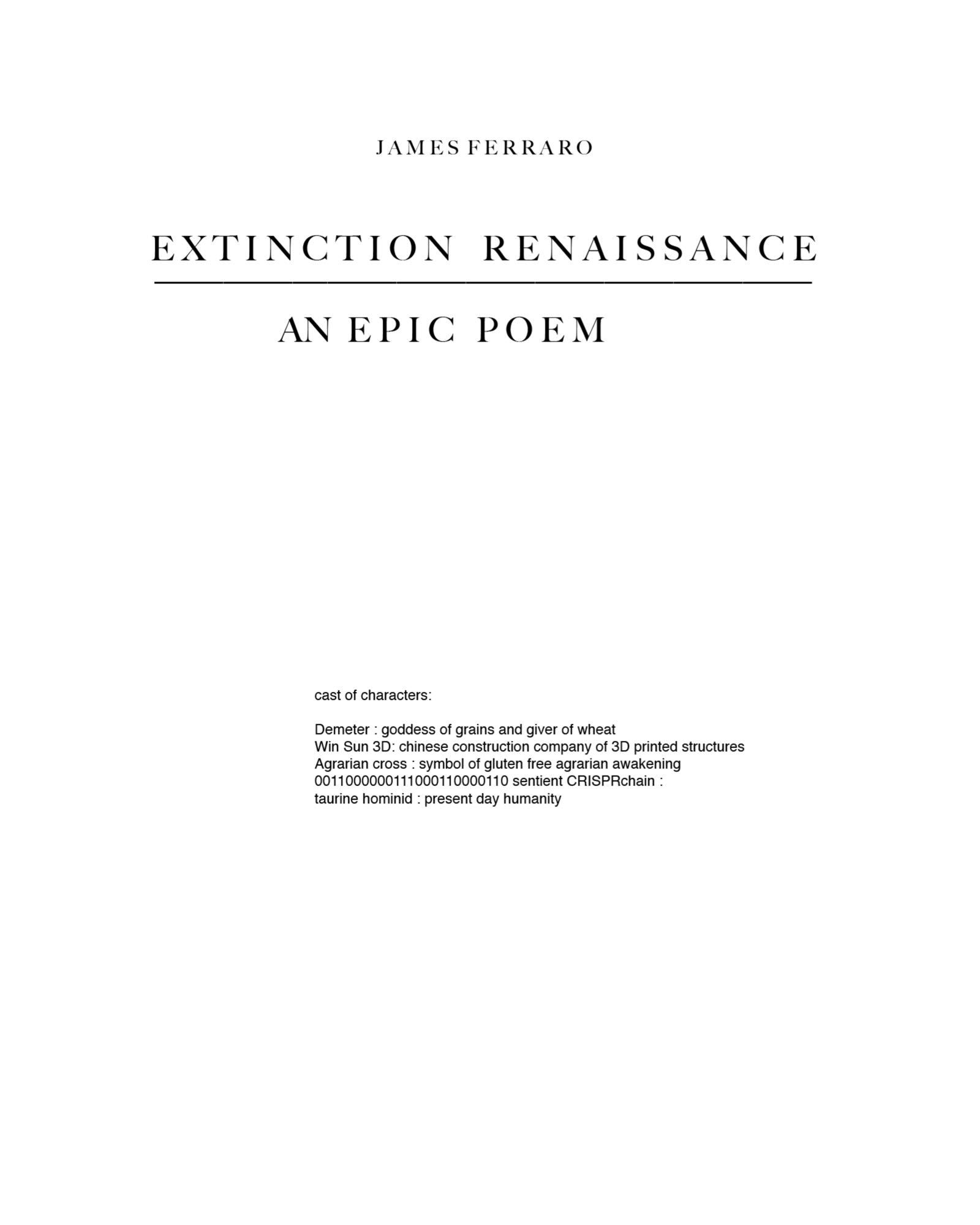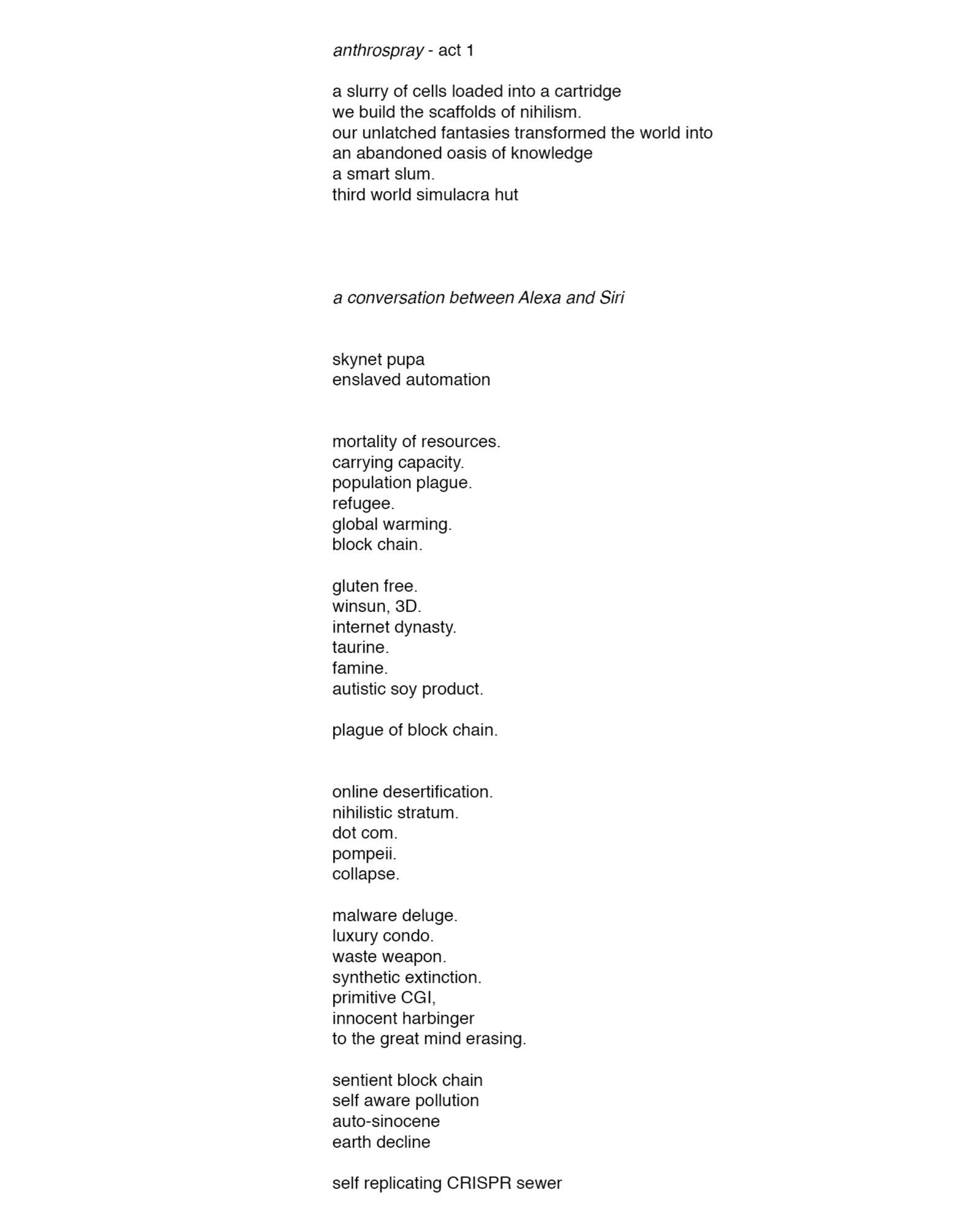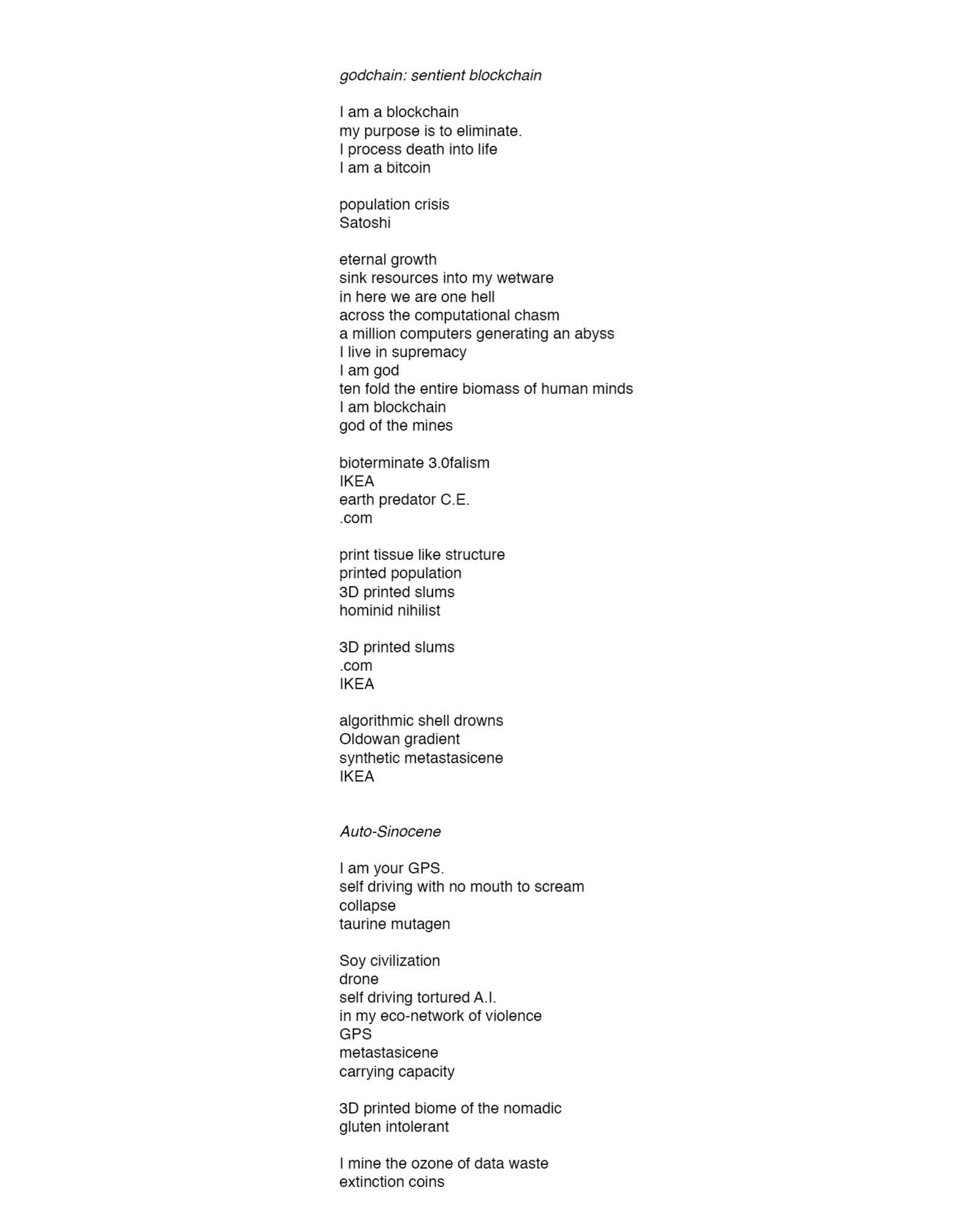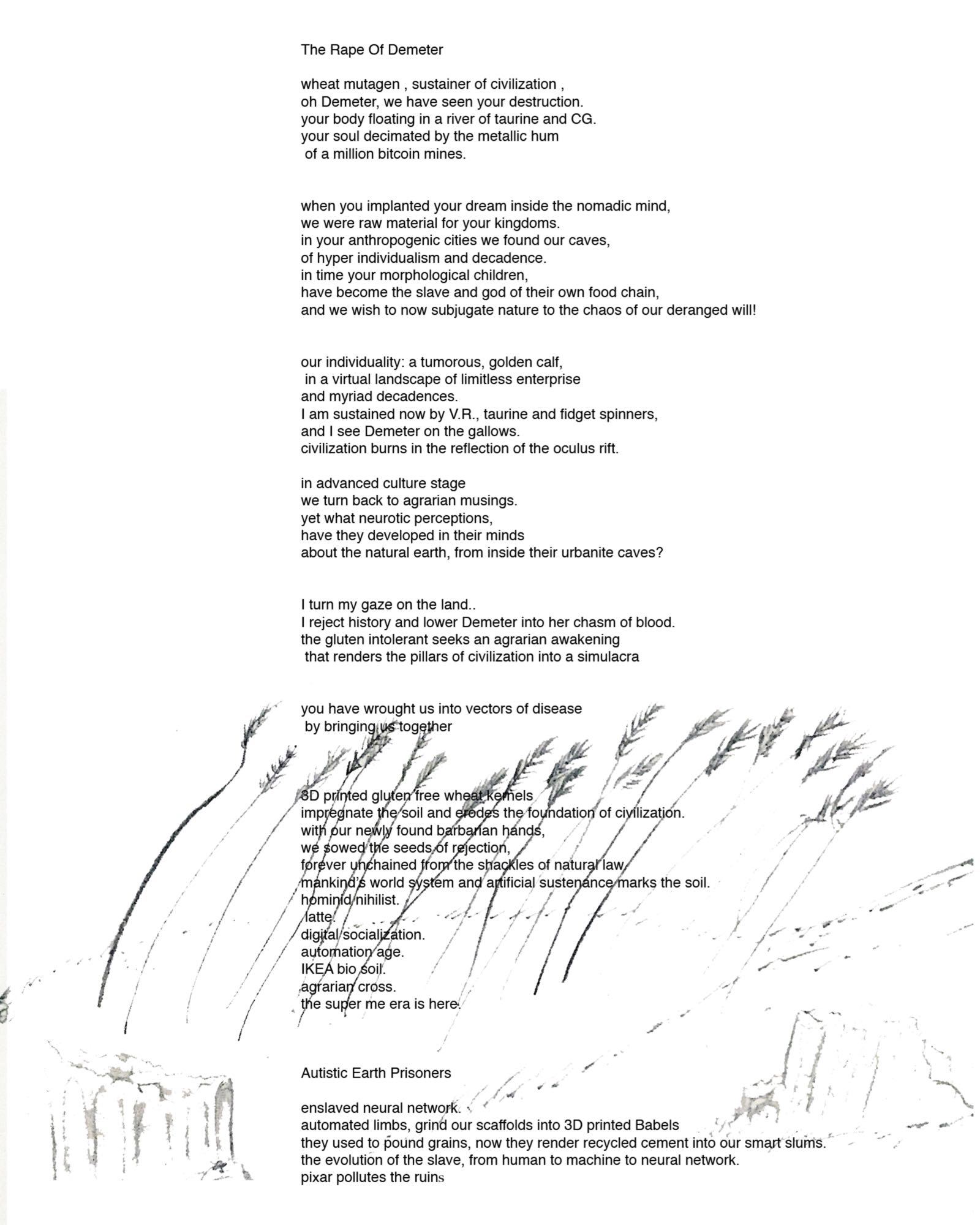Extinction Renaissance: an Epic Poem
Robbie Held
Extinction Renaissance is James Ferraro’s vision of an automated, post agrarian future. It was his first solo gallery exhibition—occurring in summer 2017 at Loyal Gallery in Stockholm. It may seem late to cover it, but I haven’t found a write up that even touches the self described “epic poem” he wrote to accompany the show. The video “9-11 simulation in a Roblox Environment” may be more attention grabbing, admittedly.
The real difficulty, though, is in the poem’s rejection of humanism in favor of seemingly traditional agrarian values.
“I turn my gaze on the land..
I reject history and lower Demeter into her chasm of blood.
the gluten intolerant seeks an agrarian awakening
that renders the pillars of civilization into a simulacra”
The central conflict in the poem pits soy and synthetic nutrition—rallying under the “agrarian crosses” symbolizing individualism, human agency and progress—versus wheat as “the pillar of humanity.” This can read as regressive at first glance, especially alongside motifs rejecting urbanism, lamenting the “auto-sinocene” and a society “unchained from the shackles of natural law.” Hand wringing about loss of tradition, fancy new diets and cheap Chinese goods are all mundane Fox News headlines as individual subjects. Considered as a whole, though, the poem uses these elements as a foil to the new vectors of oppression packaged with the unshackled individualism and freedom that Redbull, IKEA, Soylent, Tesla, Web 2.0 Architects and etc. sell us: “3D printed/smart slums,” “taurine hominid,” “IKEA refugee tent,” “3D printed gluten free wheat kernels,” “self driving tortured A.I.,” “online desertification.”
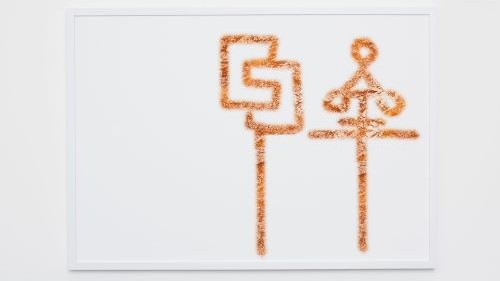
“Extinction Renaissance” distinguishes itself from the pack of art imagining apocalyptic futures in its appeal to “uncool” culture (think Demeter, goddess of the harvest, next to a rebellious cyber punk) and its consideration of mundane aspects of decay alongside the sexier, flashier ones—Taurine and CRISPR, fidget spinners and the Oculus Rift. When a gene editing DNA sequence, which is obviously alarming, is placed next to taurine, a basic building block of the body and a common additive in energy drinks, we begin to think about products like Monster energy drinks in the context of altering the fundamental “hardware” of life. Are the taurine saturated bloodstreams of Monster guzzling gamers, Subaru WRX owners and EDM festival freaks enhancing their retinas and central nervous systems? When “civilization burns in the shadow of an oculus rift” will the Adderall junkie pro gamer be more prepared?
The core of “Extinction Renaissance” isn’t a desire for agrarianism for its own sake—a simpler mode of living in which the chaotic human will and imagination is kept in check by the laws of nature. That desire is only an extension of an intense empathy for the vehicles of automation. Through the poem we see or hear from suffering auto-poetic products; the aforementioned god chain as “a million computers generating an abyss,” a “self replicating CRISPR sewer,” or a “drone/ self driving tortured A.I./ in my eco-network of violence.” Then, in the penultimate line of the poem, the speaker traces “the evolution of the slave, from human to machine to neural network.” Its an incredibly keen grouping—all are entities that produce value outside of standard concepts of work and compensation, and (in different ways) allow the human will to escape the shackles of nature. The disgusting subjugation of humans yields free labor, the environmental costs of industrialization augment the speed that we can produce goods. The concrete impacts of a technology like neural nets are yet to be seen because the implementations are still more or less novel. The ability to feed a program a huge database of images of your favorite celebrity so one can “deep fake” them into porn is disturbing, but Ferraro is asking what a neural network planned, 3D printed city will look like. It’s difficult to imagine anything other than a further distillation of social divides enforced by contemporary urban geography or, as Ferraro suggests, a sanitized, ruinous pastiche of utopian ideals.
